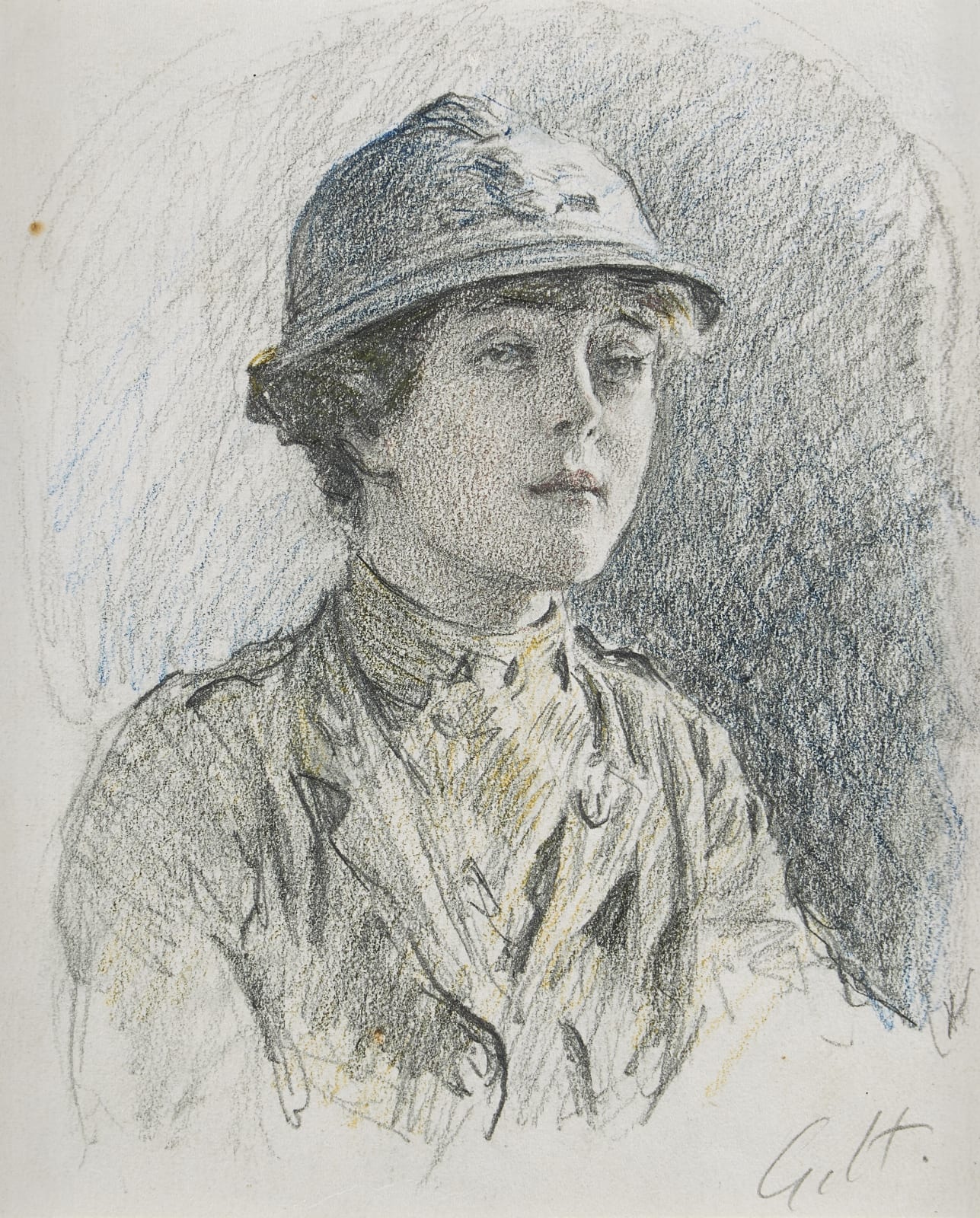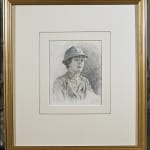Gilbert Joseph Holiday British, 1879-1937
Together with many of his generation Gilbert Holiday served during the First World War, initially as a gunner in the Royal Field Artillery on the Western Front and later as a Reconnaissance Officer which included high-risk missions sketching enemy positions in No Man’s Land. Holiday is noted as serving with distinction at Arras, Passchendaele and the Third Battle of Ypres and a label attached to the reverse of this work notes he drew the sitter, Sadie Bonnell, the first woman to be awarded the Military Medal, at Chalons in July 1918.
After leaving school, Sadie Bonnell returned to her parents and assisted with day to day life at home. She learnt to drive and at the outbreak of the First World War, aged 26, joined the First Aid Nursing Yeomanry (FANY) as an ambulance driver. Serving as a first aid link between field hospitals and the front lines, the FANY had been founded in 1907 as an all women volunteer Corps, with applicants requiring a breadth of skills to qualify, including first aid, horsemanship, veterinary work, signalling and camp cookery. Despite the FANY being ready in 1914, the War Office had reservations, shamefully telling volunteers to ‘go home and sit still. No petticoats here’. Nevertheless, this rejection did not deter many joining the French and Belgian armies, whilst Sadie Bonnell joined the Canadian Army Service Corps.
No one was to predict the horrendous reality of trench warfare that followed, as thousands of wounded soldiers required transportation from the front line to advanced dressing stations, then on to field hospitals and channel ports. This was by no means an easy task, carrying the seriously hurt over bumpy roads, in vehicles with little suspension and unreliable engines. Bonnell won her Military Medal on the night of 18/19th May 1918, after coming under heavy fire while collecting wounded from a dressing station near the Front in an operation lasting five hours. The citation from the London Gazette read as follows:
For gallantry and conspicuous devotion to duty, when an ammunition dump had been set on fire by enemy bombs and the only available ambulance for the removal of wounded had been destroyed…(Bonnell) arrived with three ambulances and, despite the danger arising from various explosions, succeeded in removing all the wounded. (Her) conduct throughout was splendid.
Her Military Medal was presented in the field by Gen Sir Herbert Plumer, Commander of the 2nd Army and she was later given the actual medal by the King in 1919. Bonnell always made light of her bravery and was quoted as saying: ‘It wasn’t courage. I was there to do something useful. There was a job we had to get done.’
Depictions of women from the First World War are extremely rare and one representing such heroism provides important insight into the role they played. In this work Holiday draws Bonnell in her FANY uniform.



